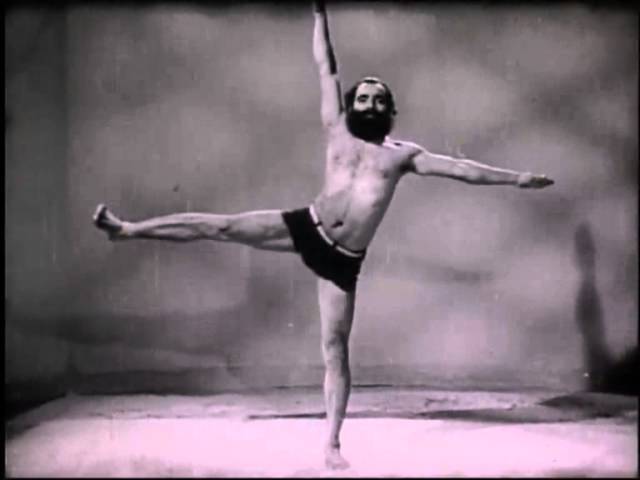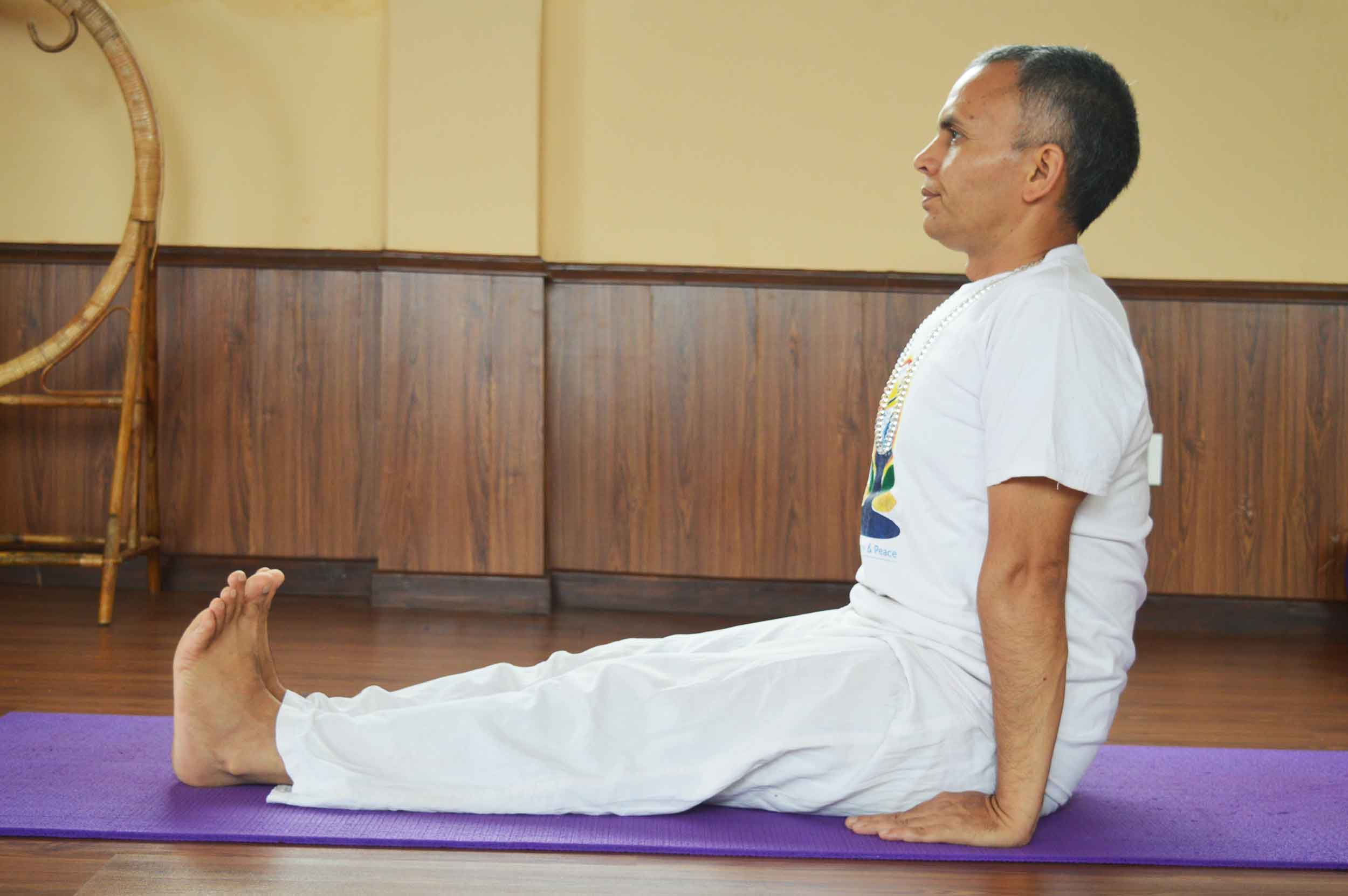
12 Jul 2020 HYN Himalayan Yoga Academy
Subtle Yoga, or Sukshma yoga, is a fundamental yoga package that fulfills the basic needs of a human being. This yoga package purifies and recharges the body, mind, energy, and emotion. It prepares a solid foundation for further means of Yoga practice. It includes Prathana (Prayer), Sukshma Vyayama (Subtle Exercise), and Vishram (Rest & Relaxation).
1. Prathana (Prayer)
AUM: A…………Body…………………….U…………………Mind……………………….M………………Spirit…………………………………..
Omkāram Vindu Samyuktam, Nityam Dhyāyanti Yoginah!
Kāmadam Mokshadam Chaiva, Omkārāya Namo Namah!!
Meaning: Salutation to the AUM, which is united with that point. Yogis meditate on that point every day. AUM fulfills our desires and liberation, so hail to AUM.
2. What is Sukshma Vyayama?
Under this package, Sukshma Vyayama is one of the major parts for physical activity and the regulation of the entire physiology. Sukshma Vyayama is also known as a kind of warm-up exercise, or basic exercise, or a clinically anti-rheumatic group of exercises, and also called body scan. The system of physical and breathing exercises helps to sequentially work out all joints of the body, to warm it up. This system has a strong purifying effect on the energy body of a human.
To understand what Sukshma Vyayama is how to perform it correctly and what kind of results it can bring, at the beginning we will translate this mysterious word combination.
History of Sukshma Vyayama
We will observe the visible Parampara of Sukshma Vyayama. The literal meaning of Parampara is the continuous chain of succession from Master to followers. In the Parampara system, the knowledge is passed on without changes from generation to generation. Unfortunately, because of the absence of enough information, we are not able to find the sources of this tradition.
The system of Sukshma Vyayama knowledge, which was unknown in the West before that, was extended by one of the outstanding yoga masters, Dhirendra Brahmachari (1925-1994). He received Initiation into Sukshma Vyayama techniques from Maharshi Kartikeya, the prophet and sacred great yogin who was his Master. In the preface to the book “Yogic Sukshma Vyayama,” Dhirendra Brahmachari wrote about his precious Guru. Deep knowledge made him a unique expert on human characters, their abilities, and possibilities. From Maharshi Kartikeya, Dhirendra Brahmachari received a precept to spread knowledge about Sukshma Vyayama. The invaluable merit of Dhirendra Brahmachari is that he managed to accumulate knowledge in a convenient form, to make it open and understandable for the audience everywhere. The book “Yogic Sukshma Vyayama” was one of the first books about yoga published.

Sukshma Vyayama practices are widespread all over the world. If to observe traditions of various yoga schools – practically each of them offers a variant of exercises to prepare a body for more difficult practices. Sukshma Vyayama in tradition of Dhirendra Brahmachari is not a unique Vyayama complex as some people suppose. But Sukshma Vyayama in tradition of Dhirendra Brahmachari can be called as one of the fullest and substantial, and the most-known in the world today.
How Sukshma Yoga (Subtle Yoga) works
The fundamental name of exercises of which practice consists characterizes Vyayama essence in the best way: The Sanskrit word Vikaasaka means opening, expansion, and deepening. Vyayama is a workout of various body parts, removal of blocks and clips, influencing both on a physical and mental level. The name of the exercise specifies the workable area: body parts, joints, muscles, nadis, chakras, and marmas (special energy points). For example, Kaphoni Shakti Vikaasaka is an exercise for warm-up, improvement of elbow strength. In this case, strength is the complex conception including force, endurance, mobility, ability, and flexibility.

The complex of Sukshma Vyayama exercises can be performed as a separate self-sufficient practice lasting one and a half or two hours, allowing working out the whole body, or as a warm-up. It will help to warm up muscles and joints before the performance of asanas and will make Hatha Yoga practice more effective. Yoga therapists appreciate Sukshma Vyayama’s advantages and possibilities at its true value and include some of the elements in the exercise sequence.
The uniqueness of this complex is safety from traumas and availability for different categories of people, both for the young and for the elderly. Despite simplicity, exercises are very effective and can be performed by both healthy and sick. If the condition of health does not allow a person to practice Asana, he can start with regular practice of Sukshma Vyayama, which can gradually help to get rid of many illnesses. Sukshma Vyayama is an excellent complex for beginners who will prepare themselves for more difficult practices and for experienced yogis who can raise the efficiency of their practice.
Physiological with Yogic Sukshma Vyayama
In Yoga, it is said that most pranic blockages start in our joints, which is why Sukshma Vyayama is done to release any such impurities. Physically, they provide us with mobility by connecting two bones, allowing us to move rather than be stiff like a log of wood. However, if the joint were comprised of just the bones, then it would soon deteriorate due to friction and erosion. That is why the joint is supported by tissues like hyaline cartilage, ligaments, synovial membrane, and synovial fluid, which help prevent grinding of bones against each other. If this cartilage depletes due to age, injury, or wear and tear, then we start getting issues like joint pain and arthritis.

Although they are not very popular in the modern yoga practice, they are in practice in the traditional schools, especially the ones affiliated with Kriya Yoga. These movements are also known as ‘Yogic Sukshma Vyayama’. They are used by most schools of Yoga and also in schools of healing, yoga clinics, and even in cultural Meditation centers.
Benefits of Sukshma Vyayama (Subtle Exercise)
- Sukshma Vyayama is performed as a warm-up for warming up muscles.
- Subtle Kriyas remove blocks and clips in muscles, strengthening them.
- Manage and improve blood circulation, alleviate happiness and holistic health.
- Muscle strengthening, strengthening ligaments, and increasing their elasticity.
- Development of flexibility, plasticity, and mobility.
- Improving coordination and balance.
- Increased blood circulation, sense communication.
- Normalization of metabolism, Immunity strengthening.
- Improving health, concentration, coordination, and equilibrium.
- Fine channel cleansing, and Chakra Activation.
- Harmonizes organism.
- Lung enlargement and increases vital lung volume.
- It prepares for the practice of more complex asanas, pranayamas, and Dhyana, so it is also called a pre-meditative group of exercises.
To be noted:
At runtime, you need to monitor the back: it should be straight, and the shoulders should be slightly laid back. You cannot strain the neck, but focus on its extension. All movements should be smooth and uniform. Breathing throughout the entire set of exercises remains even, without delays or rapid rhythm. Each exercise is repeated 4 to 16 times as needed and with effort, unless otherwise specified in the description.
It is also important to observe the sequence: each subsequent complex is an organic continuation of the previous.
48 Sukshma Vyayama (Subtle Exercise)
- Vishuddhi Shuddi Kriya (Throat Chakra cleanse)
- Prathana Kriya (Namaskara Mudra)
- Buddhitat Dhriti Shakti Vikasaka Kriya (Back Crown cleanse)
- Smarana Shakti Vikasaka Kriya (Top Crown Cleanse)
- Megha Shakti Vikasaka Kriya (Medulla Cleanse)
- Netra Shakti Vikasaka Kriya (Eyes Cleanse)
- Kapola Shakti Vikasaka Kriya (Skull Energize Act )
- Karna Shakti Vikasaka Kriya (Ears Energize Act)
- Ghriva Shakti Vikasaka Kriya-I (Neck Exercise)
- Griva Shakti Vikasaka Kriya – II (Neck Exercise
- Ghriva Shakti Vikasaka Kriya –III (Neck Exercise)
- Skandha Baahu Moola Shakti Vikasaka Kriya (Shoulder Movable Act)
- Musthi Bandha Shakti Vikasaka Kriya (Fist Bend act)
- Kuhuni Shakti Vikasaka Kriya (Elbow bend Act)
- Bhuja Balli Shakti Vikasaka Kriya (Hands raised Act)
- Poorna Bhuja Shakti Vikasaka Kriya (Hands rorate)
- Mani Bandha Shakti Vikasaka Kriya (Wrist Bend)
- Karpos Shakti Vikasaka Kriya (Wrist rorate)
- Kartal Shakti Vikasaka Kriya (Phalanges)
- Anguli Moola Shakti Vikasaka Kriya (Phalanges loosen)
- Anguli Shakti Vikasaka Kriya (Tighten the fingers)
- Vakshasthala Shakti Vikasaka Kriya- I (Chest stretch with raised hands)
- Vakshasthala Shakti Vikasaka Kriya- II (Chest stretch with hands back)
- Udara Shakti Vikasaka Kriya –I (Abd. Expand with holding)
- Udara Shakti Vikasaka Kriya –II (Abd. Fast In-Out)
- Udara Shakti Vikasaka Kriya –III (Abd. Move In-Out with head back)
- Udara Shakti Vikasaka Kriya –IV (Abd. Move In-Out with head down)
- Udara Shakti Vikasaka Kriya – V (Abd. Expand with holding whole body)
- Udara Shakti Vikasaka Kriya –VI (Abd. Expand with half lumbar bending)
- Udara Shakti Vikasaka Kriya –VII (Abd. Expand with half lumbar bend 90)
- Udara Shakti Vikasaka Kriya –VIII (Abd. Agnisar with half lumbar bend 45)
- Udara Shakti Vikasaka Kriya –IX (Abd. Agnisar with half lumbar bend 90)
- Udara Shakti Vikasaka Kriya –X (Abd. Rotation)
- Kati Shakti Vikasaka Kriya – I (Lumbar bend holding on back)
- Kati Shakti Vikasaka Kriya –II (Lumbar bend feet close)
- Kati Shakti Vikasaka Kriya- III (Lumbar back front with breath)
- Kati Shakti Vikasaka Kriya –IV ( Lumbar bend sideways)
- Kati Shakti Vikasaka Kriya –V (Twist with feet apart)
- Mooladhara Shakti Vikasaka Kriya (Anus lock and pull up)
- Upastha Shakti Vikasaka Kriya (Genitals Lock)
- Kundalini Shakti Vikasaka Kriya (Feet apart and heel to hip)
- Jangha Shakti Vikasaka Kriya –I (legs fast open –close)
- Jangha Shakti Vikasaka Kriya –II (Chair pose on toes)
- Janu Shakti Vikasaka Kriya (Bend knee)
- Pindali Shakti Vikasaka Kriya (Squat pose)
- Paadamoola Shakti Vikasaka Kriya (Heel Up-down)
- Gulf Paadaprista paadatala Shakti Vikasaka Kriya (Ankle rotate)
- Pada Angula Shakti Vikasaka Kriya (Toes flex)
Vishrama (Rest & Relaxation)
Shavasana or state of Rest and Relaxation at any Position as need
1. Deha Dharana (Body Relaxation)
2. Prana dharana (Breath/Energy Relaxation)
3. Mano Dharana (Mind Relaxation)
To sum up
One of the best ways to create a good atmosphere in physical, mental, energy, and emotional levels and protect our joints and muscles is to keep moving mindfully and changing our posture from time to time. These joint movements are an accessible and gentle way to incorporate therapeutic movements in our daily lives. They improve circulation, remove stiffness and tension, and relieve the nervous system, and can be done by anyone. It regulates the contraction of muscles that enhancing the ability and mobility of muscles and joints. Physiologically, just stretching is not flexibility; in fact, the mobility and ability of Joints and muscles is called flexibility. These are also a good way to warm up before our yoga practice. It keeps us safe and risk-free. Stay healthy and happy.
Article By : Yogacharya Subodh Simkhada
